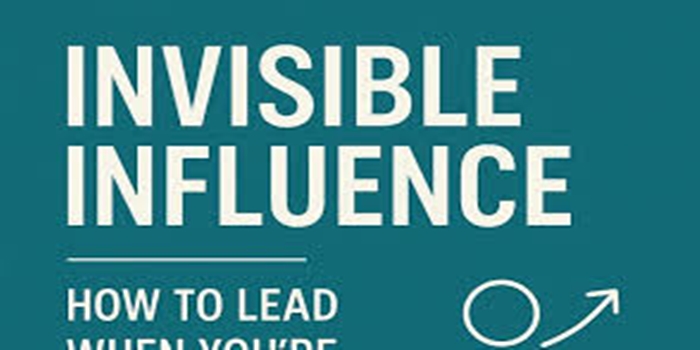In this article, we explained the meaning of invisible influence, the examples, the features, the advantages and disadvantages.
Definition
The concept of Invisible Influence refers to the unintentional and often unplanned ways in which our actions, beliefs, and decisions are shaped by the behaviors and decisions of others, without us realizing it. This influence is like a silent force that constantly surrounds us, impacting almost everything we do, from ordinary choices to important life decisions.
The Features of Concept of Invisible Influence:
Subtle and Often Unconscious:
The influence is not a blatant command, but rather a subtle sway that can operate below our conscious awareness.
Pervasive Nature:
This influence is seen as a constant presence, affecting nearly every aspect of our lives, from everyday choices to significant life decisions.
Impact on Various Aspects:
Invisible Influence affects our preferences, behaviors, identities, and the choices we make regarding everything from what we eat to the careers we pursue.
Balancing Similarity and Uniqueness:
The book emphasizes the concept of being “optimally distinct,” suggesting that individuals strive for a balance between conforming to social norms and expressing their own individuality.
Identity Signaling:
The choices we make often serve as signals to others about our identity and social status, influencing how we present ourselves.
Social Facilitation:
The presence of others can sometimes enhance our performance on simple tasks, but it can also hinder performance on complex tasks.
Mimicry and Conformity:
We often subconsciously mimic the behavior of those around us, and this mimicry can lead to greater liking and smoother interactions.
Influence of Sibling Dynamics:
Siblings can also have a significant influence on our development and choices, particularly in terms of how we differentiate ourselves from our siblings.
Cultural Context:
The need to differentiate or conform is also influenced by the cultural context in which we live.
Identity and Social Status:
The book highlights how our choices often reflect our identity and social status, and how we use these choices to signal our place in society.
The Power of Social Influence:
The book explores how we can use understanding of social influence to make better decisions and achieve better outcomes.
Examples of Invisible Influence:
Social Comparison:
We might buy a new car because our neighbors recently purchased one, or choose a different color to stand out.
Motivation:
Others can motivate us to work harder or give up, depending on how we perceive their abilities.
Mimicry:
We might unconsciously copy others’ actions, like purchasing a specific shirt because it’s in style.
Avoidance:
We might avoid certain choices to avoid appearing “uncool” or “out of place,” like not buying a minivan.
Identity Concerns:
Our choices might be influenced by the desire to be perceived as a certain type of person, like a “soccer mom” or a “geeky guy”.
Emotional Contagion:
We can even unconsciously feel the emotions of others, leading to shared feelings like impatience or calmness.
Advantages:
Understanding Social Dynamics:
Recognizing invisible influence allows us to better understand how people are influenced by their surroundings and social groups. This can be valuable in various contexts, from personal relationships to professional settings.
Designing Effective Environments:
By understanding how social influence works, we can create environments that encourage desired behaviors and discourage negative ones. For example, in workplaces, understanding social dynamics can lead to more effective team building and performance management.
Positive Influence:
Knowing how to subtly influence others can be used for positive purposes, such as promoting health behaviors, supporting social causes, or inspiring creativity.
Improved Decision-Making:
By recognizing and mitigating the impact of invisible influences, individuals can make more conscious and informed choices.
Disadvantages:
Manipulation and Exploitation:
Invisible influence can be misused to manipulate individuals or groups, leading to unethical behavior or harmful outcomes.
Undermining Individual Autonomy:
If not understood and managed properly, invisible influence can undermine an individual’s ability to make autonomous decisions.
Social Inequality:
Certain groups may be more vulnerable to invisible influence, leading to or exacerbating social inequalities.
Ethical Concerns:
The potential for manipulation and exploitation raises ethical concerns about the use of invisible influence techniques.
Conclusion
Invisible influence refers to the subtle, often unconscious ways that other people’s behaviors, choices, and actions impact our own, even though we may not be aware of it. It’s the idea that we’re constantly being shaped by the environment and people around us, influencing our decisions and actions without our explicit knowledge.


